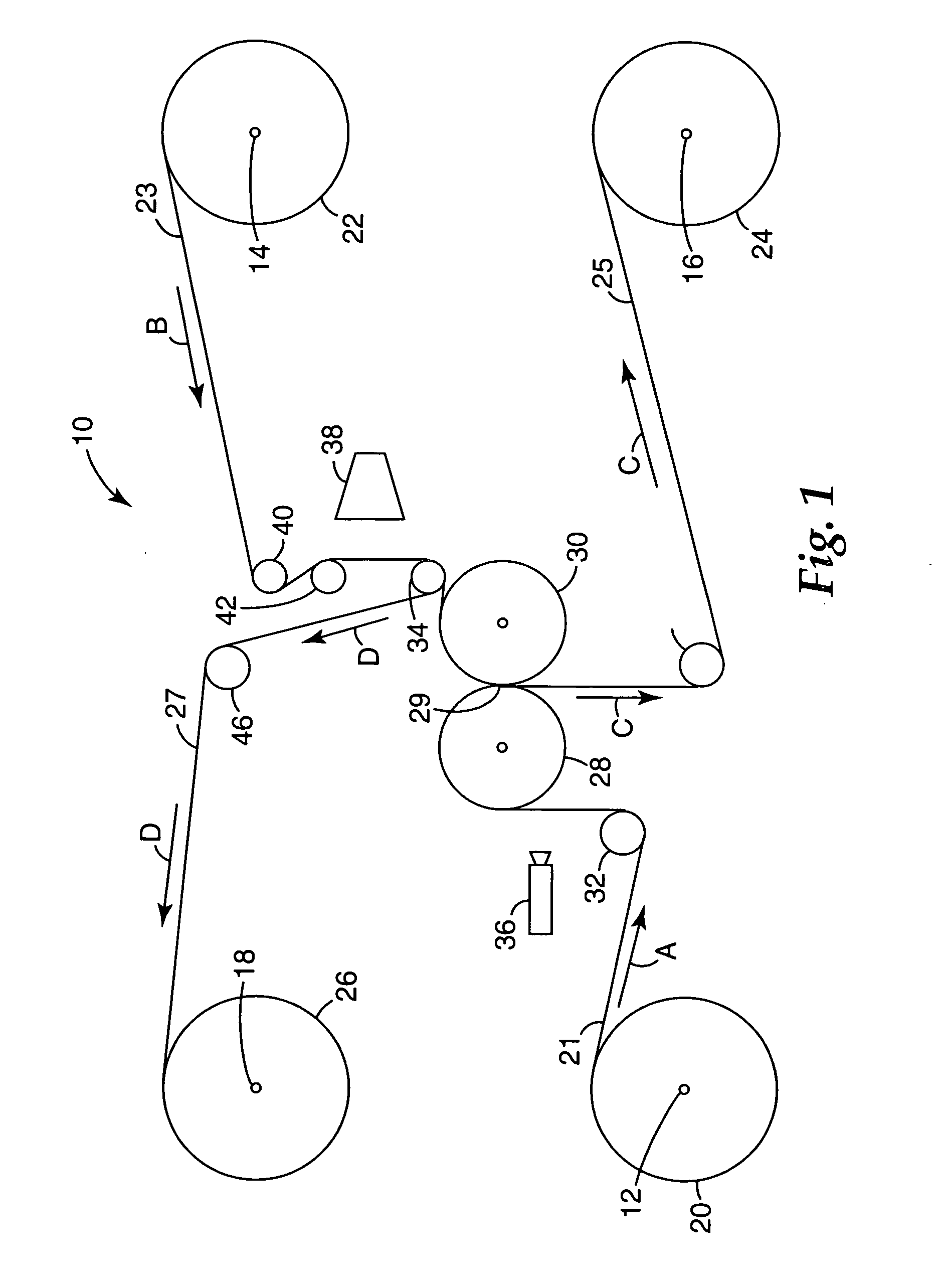Registered lamination of webs using laser cutting
a laser cutting and web technology, applied in the field of web registration and layer registration, can solve the problems of difficult access to circuits in continuous rolls of laminated webbing, difficult and time-consuming hand lay-up and registration operations, and high cost of techniques,
- Summary
- Abstract
- Description
- Claims
- Application Information
AI Technical Summary
Benefits of technology
Problems solved by technology
Method used
Image
Examples
Embodiment Construction
[0018] The present invention provides novel methods and apparatuses for enabling multi-layered circuits to be formed on webs such that electrical connection to the various layers of the multi-layered circuit can be exposed for subsequent connection to each other or external circuitry. In one of its aspects, the invention provides a machine vision registered cutting during the lamination process to expose key areas of the circuit that would otherwise be covered by the laminate layer.
[0019] The present invention also provides an efficient solution to the problem of precession when attempting to create multi-layered circuits in web form. In the case where two circuit layers are formed on two separate webs, each in a succession of images, image precession will occur when the two webs are laminated together in register. This happens due to the fact that the pitch between images cannot be exactly maintained, and any small error, when accumulated through many images, will cause the regist...
PUM
| Property | Measurement | Unit |
|---|---|---|
| Structure | aaaaa | aaaaa |
Abstract
Description
Claims
Application Information
 Login to View More
Login to View More - R&D
- Intellectual Property
- Life Sciences
- Materials
- Tech Scout
- Unparalleled Data Quality
- Higher Quality Content
- 60% Fewer Hallucinations
Browse by: Latest US Patents, China's latest patents, Technical Efficacy Thesaurus, Application Domain, Technology Topic, Popular Technical Reports.
© 2025 PatSnap. All rights reserved.Legal|Privacy policy|Modern Slavery Act Transparency Statement|Sitemap|About US| Contact US: help@patsnap.com



